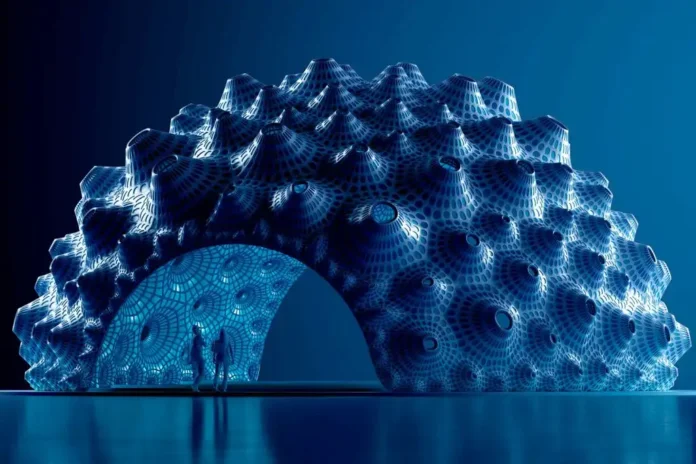

What is computational design?
Computational design is a process that utilizes parameters and algorithms to generate a specific design outcome. This process is facilitated by digital tools and software, which include Grasshopper and Dynamo, through which the parameters and algorithms can be controlled and manipulated.
Computational design is often synonymous with parametric and algorithmic design and is not limited to a specific discipline. Whether you are an architect, engineer, urban designer, industrial designer, or interior designer, you can find ways to leverage the potential of computational design software and techniques for ground-breaking, efficient, and innovative results.
What are the advantages of learning computational design?
Some of the main applications of computational design include customization, form experimentation, and optimization, which are crucial in any field. These functionalities can speed up the design process while helping designers develop better solutions. The nature of the iterative computational process also decreases execution risks, permitting fast, seamless, and cost-efficient design enhancements.
Let’s not forget that demand for computational design is on the rise; therefore, one of the main advantages of learning computational design is following current-day trends and staying up to date!


How can I become a computational designer?
Becoming a computational designer is a process that requires constant learning due to the ever-changing nature and technologies of the discipline. If you are looking for a place to start, follow these steps.
1. Explore the works of computational designers
Understanding computational design, its uses, and its potential is essential. The best way to do that is through exploring the works of different designers in different industries.
For example, if you are interested in the intersection of architecture and computational design, following and understanding the works of the likes of Zaha Hadid and Patrik Schumacher is beneficial.
Looking into Nick O’Donnell’s works is valuable if you are more interested in parametric furniture design.
Try to find the pioneers of the fields you are interested in and analyze their works. Educate yourself by reading about their publications or watching their interviews. This ensures that you thoroughly understand the rationale behind their design process, starting from concept to design tools.
In addition, by engaging in computational or parametric design communities like Parametric Architecture, you can broaden your horizons and perspective in the design field.


2. Narrow down your focus
After exploring the vast world of computational design, narrowing your focus is one of the first steps to success. While it is tempting to explore and learn everything, it is important to realize that it is not possible to master every software in every way and for every field. Learning and mastering the design applications in the specific discipline you choose to pursue is the way to go.
3. Develop your skillset
After you define your focus, determine the tools you need and start exploring them. Make sure to look into job descriptions to check what skills recruiters seek. Then, you can start with general videos and guides that teach you how the software operates, especially if you are a beginner. Try to follow tutorials and go step-by-step.
However, once you feel like you are starting to get the hang of it, select a meaningful design project to start practicing. Practicing through designing a project guarantees that the skills you develop will stay with you. Instead of mindlessly replicating online videos, challenge yourself to learn new methods and techniques.
Engage with online communities and learn from their questions and mistakes. Try to enroll in workshops or courses led by experts in the field to learn about their processes and methods. If you are unsure about where to find high quality workshops, PAAcademy is here for the rescue. PAAcademy has plenty of innovative workshops to help you sharpen your skills. Make sure to check them out!
Be careful! The process will be challenging; however, make sure not to shift paths too often if you find learning some skills tough! The learning process will always be rigorous and demanding; however, the result is worth it. Going back and forth too many times means you risk wasting your time without learning anything.


4. Build a portfolio
Once you’ve built a foundation with the computational design tools needed for your pursuit, it’s time to create a portfolio. Your portfolio is your most valuable asset, representing all the knowledge and skills you have acquired. Make sure to include your best works and explain your process. Stick to portfolio design standards because you are a designer at the end of the day!
Try to get feedback from other computational designers in the field to know what may be lacking in your presentation.
Check out job descriptions for positions you are interested in to get a sense of what they are looking for in a designer and try to represent it in your portfolio.
5. Marketing!
Last but not least, make sure to put yourself out there! Whether through an online portfolio or online presence on social media or freelancing websites, your efforts to spread the word about your work will help you land your first job or project.
Attend conferences or events and make sure to build your network, both face-to-face and virtually.
The last step to becoming a computational designer is learning to be adaptable and flexible. The field is relatively new, but it holds a lot of potential and opportunities, so what distinguishes one computational designer from another is their ability to push through; it is all about learning new skills and staying up-to-date to push the boundaries and limits of design innovation.


